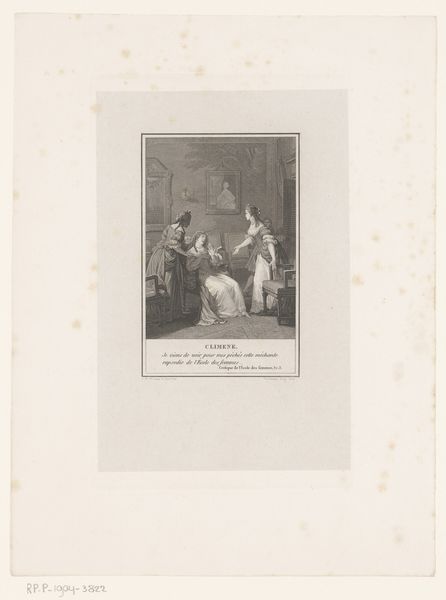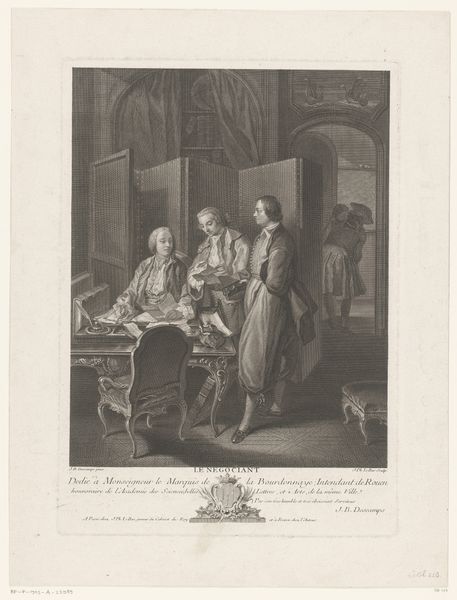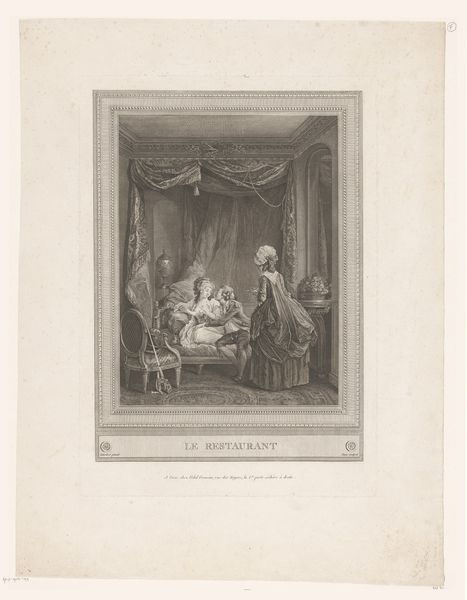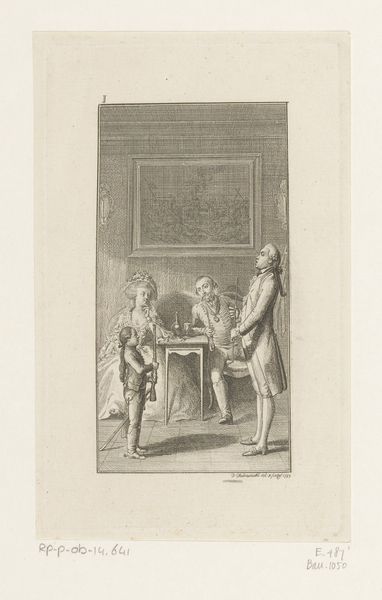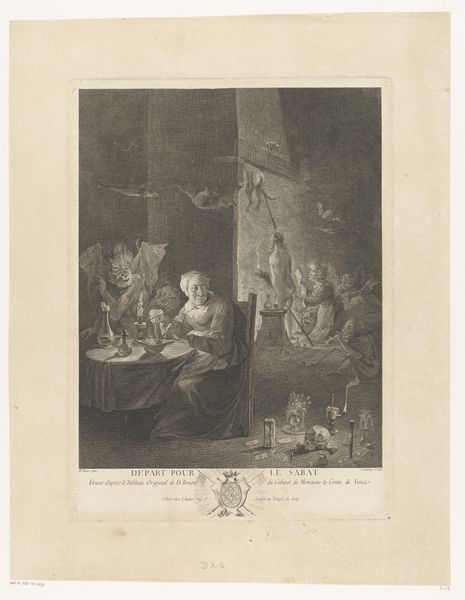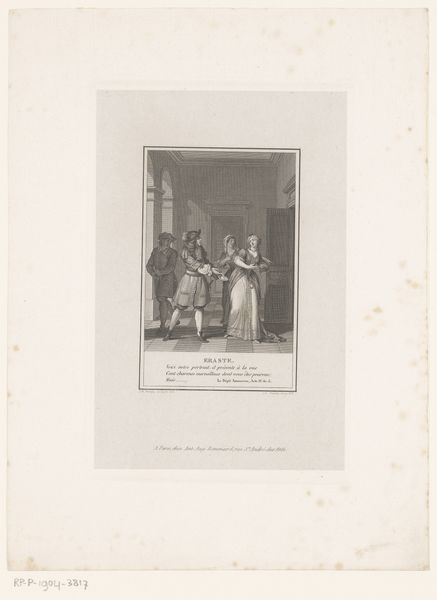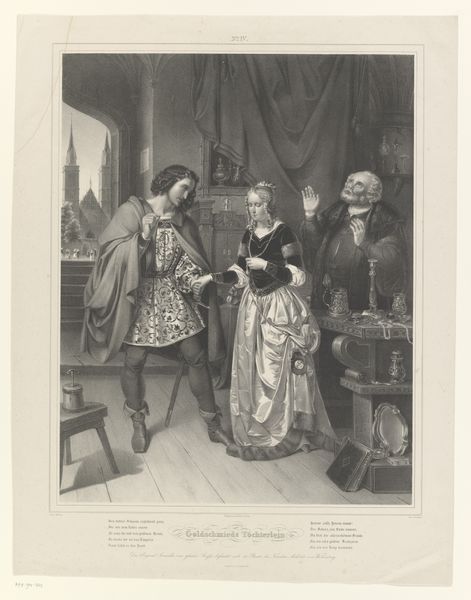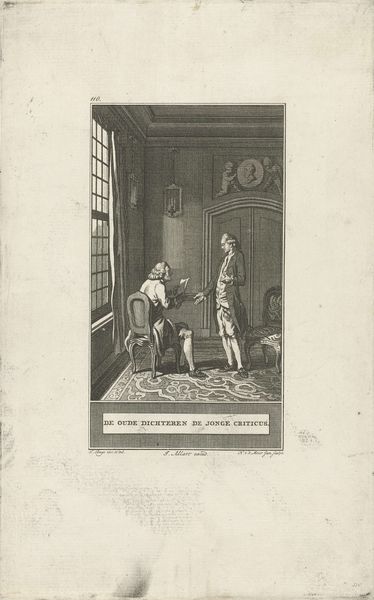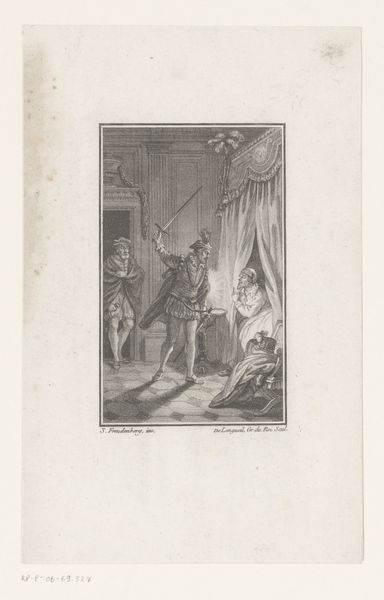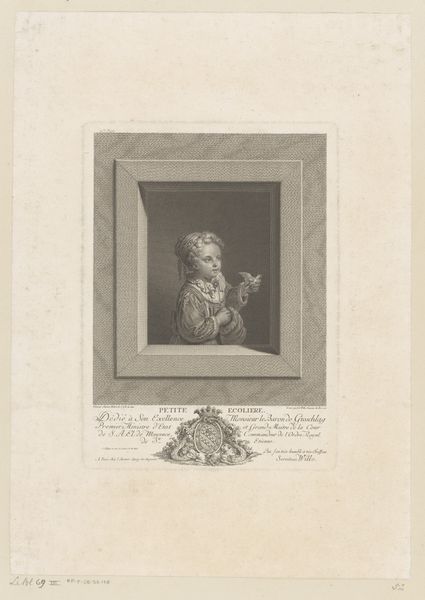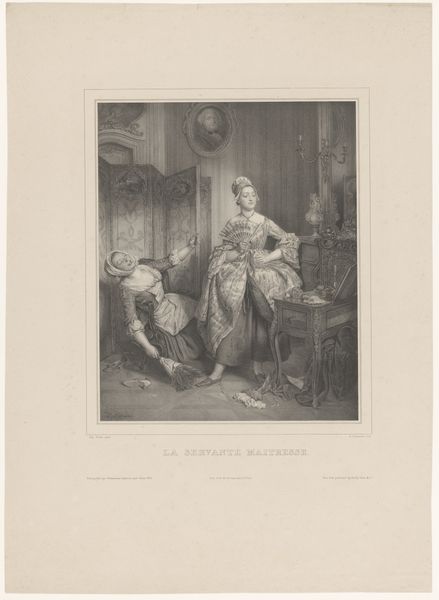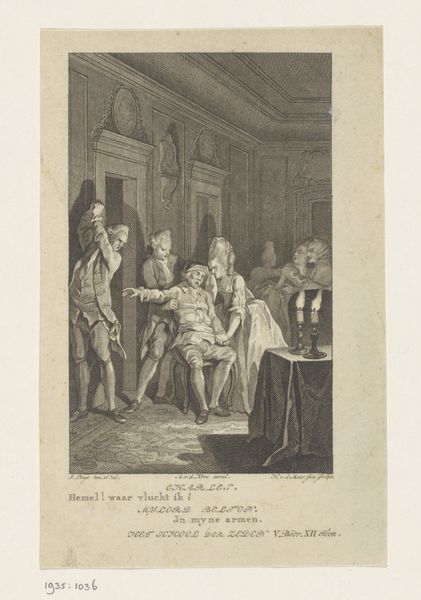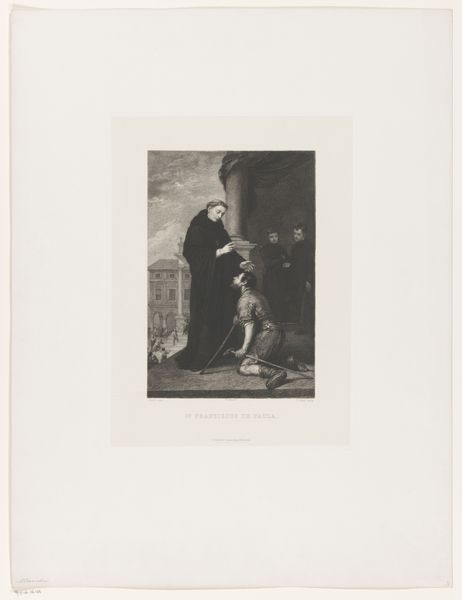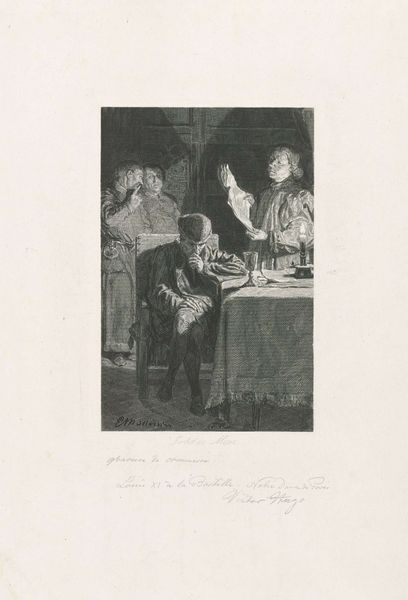
print, engraving
#
print photography
#
narrative-art
# print
#
figuration
#
romanticism
#
line
#
genre-painting
#
engraving
Dimensions: height 504 mm, width 380 mm
Copyright: Rijks Museum: Open Domain
Editor: Here we have "Vrouw verrast haar man", which translates to "Woman surprises her husband," an 1829 engraving. It strikes me as a somewhat sentimental scene, but also a bit staged. How would you interpret this work within its historical context? Curator: This piece offers a glimpse into 19th-century domestic life, filtered, of course, through the lens of Romanticism and its increasing popularisation of genre painting. The staging you observed hints at a certain performative aspect of family life, a way of constructing and presenting an ideal. What do you make of the composition, particularly the contrast between the figures indoors and the man arriving in the doorway? Editor: It does feel very deliberate, the way the woman and her guests are highlighted by the window light, creating a sense of warmth and intimacy in contrast to the dimly lit entrance. The man in the doorway almost feels like an intruder on a carefully crafted moment. Is this a commentary on gender roles or social expectations? Curator: Exactly! We have a suggestion that domestic space as a female domain. The returning man, while presumably the head of the household, disrupts this carefully curated scene. Consider also the rise of the middle class at this time, with a new emphasis on private life and domestic bliss as a marker of status. How does this image, with its emphasis on a surprised homecoming, speak to the aspirations and anxieties of that social class? Editor: That's a great point. The scene almost becomes a display of idealized family life, something to be envied and perhaps emulated. It’s interesting to consider how art like this both reflected and shaped social values. Curator: And don’t forget the power of print media! Engravings like this would have been widely circulated, shaping public perception of idealised domesticity. What did you learn from our conversation? Editor: I now have a deeper understanding of how social class and domestic expectations of the period are visualised within this artwork, also I learned that Romanticism is popularising this type of image. Thank you. Curator: I am happy I could shed more light on this engraving. It always pleases me to see how people interact with social and gender history represented through art.
Comments
No comments
Be the first to comment and join the conversation on the ultimate creative platform.
